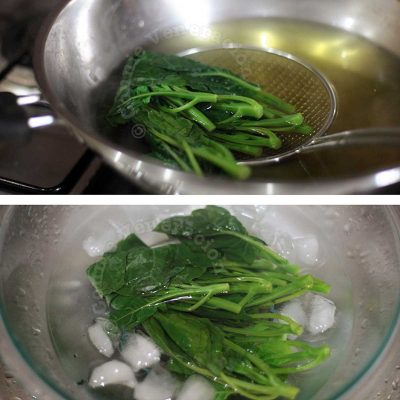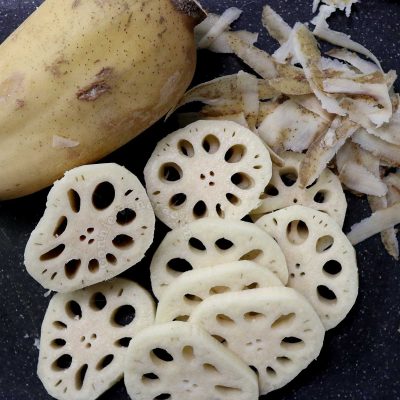The entire process — from frothy to stiff peaks — takes anywhere from eight to 15 minutes depending on the freshness of the eggs, and the tool you use to beat them. The freshest eggs will get to the stiff peak stage faster.
Unless you have super strong wrist and arm, the process also takes longer if beating by hand with a wire whisk.
Frothy stage
When you crack an egg, the white isn’t really white, is it? It’s transparent and a very pale yellow. The color and the opacity change during beating.
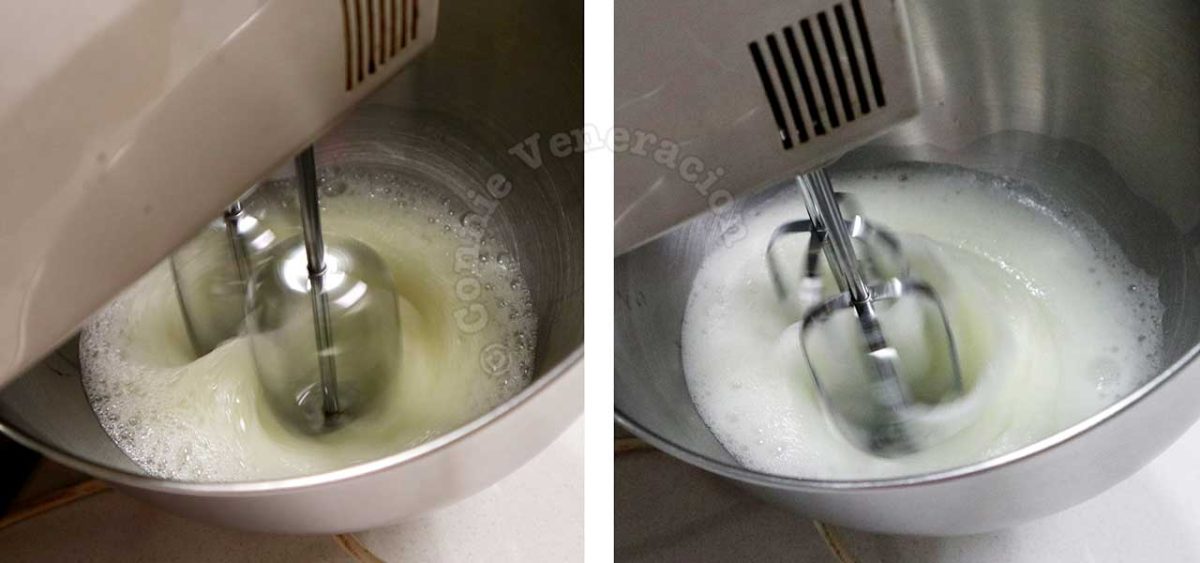
When you start beating egg whites, the first thing you’ll notice are the large bubbles that form. During the first few minutes, the mass becomes translucent instead of transparent but is still a pale yellow.
After a few minutes of beating, the bubbles become smaller and the mixture starts to turn white and opaque.
Bubbles are no longer visible
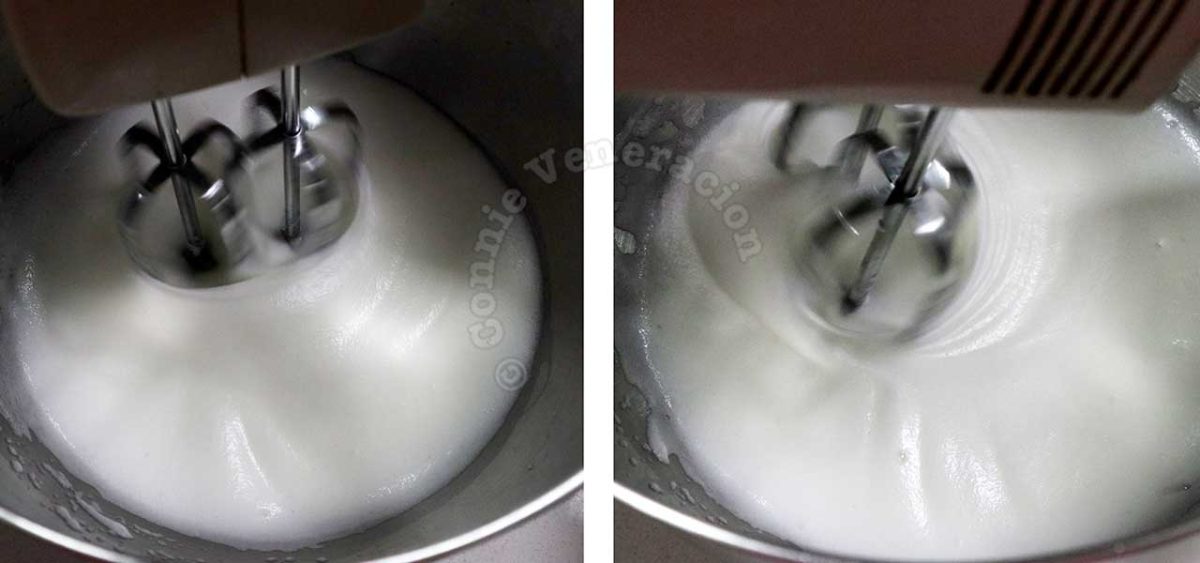
More beating and you can no longer see the bubbles. They are still there, of course. But they are starting to get really small and you can’t see them with the naked eye.
The egg whites also start acquiring volume and, at this stage, it is totally opaque.
Peaks starting to form
As you continue beating the egg whites, a whirlpool starts to form around the beaters.
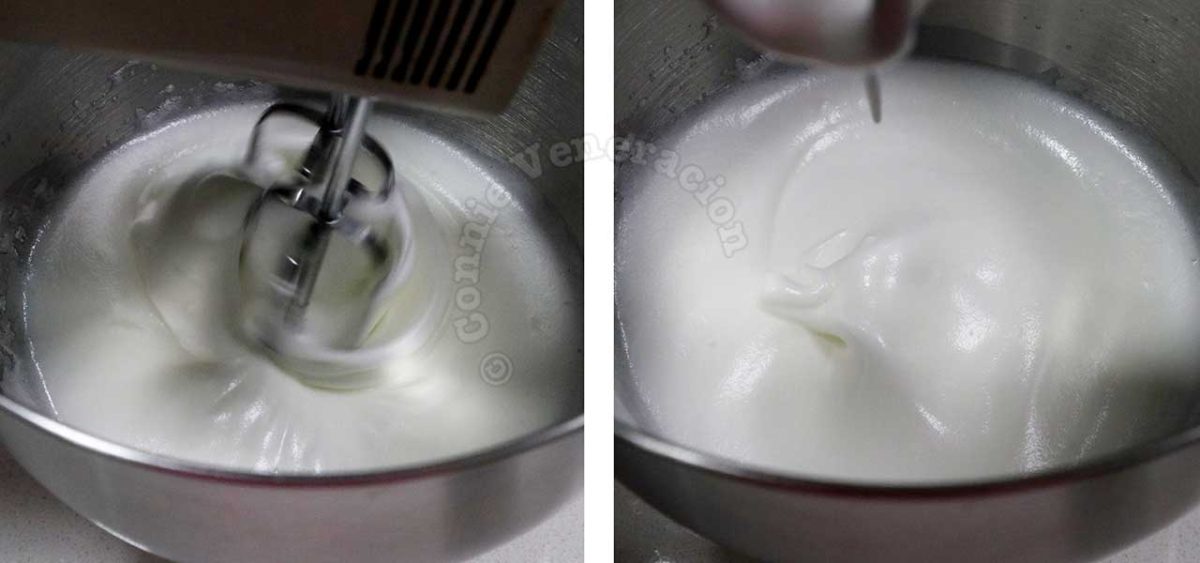
When you lift the beaters, a peak temporarily rises but quickly collapses although it may retain some of its shape.
The whirlpool also collapses and the surface of the mixture is still mostly flat.
Soft peak stage
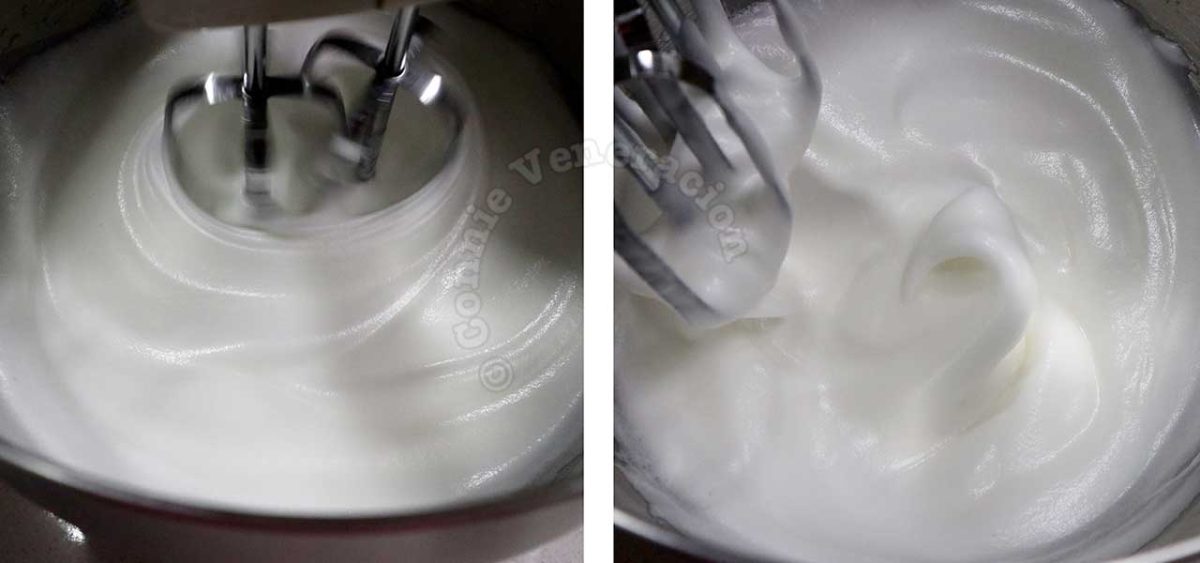
As you reach the soft peak stage, the whirlpool that forms around the beaters rises higher. When you lift the beaters, a peak rises and does not collapse but its tip folds back down.
The surface of the mixture is glossy and is no longer flat. The eggwhites have also doubled in volume.
This is the soft peak stage.
Peaks are almost stiff
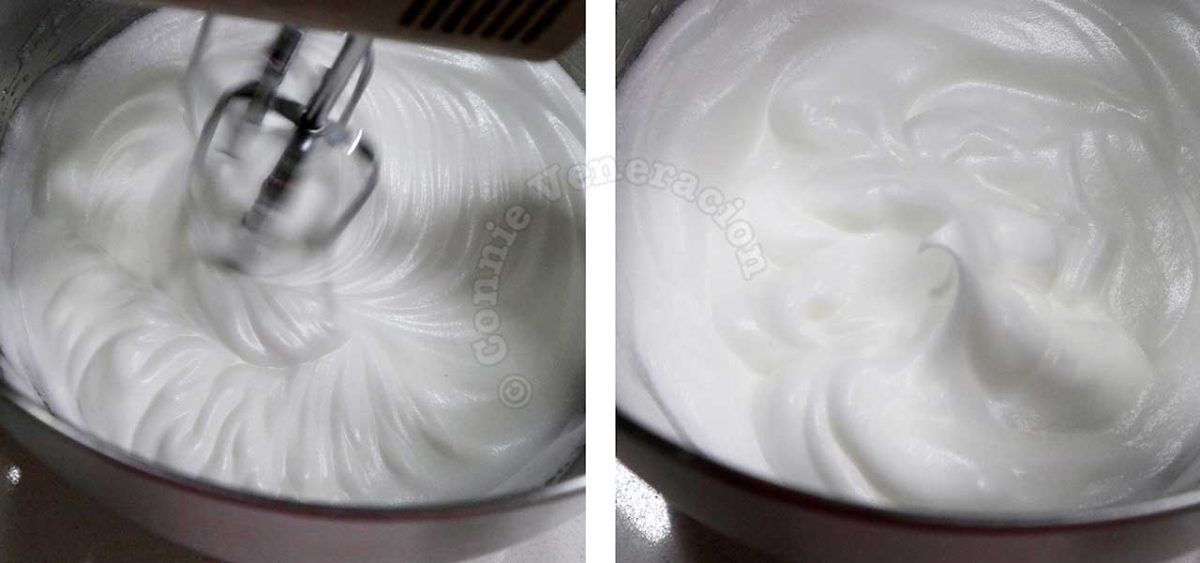
To get to the stiff peak stage, continue beating the egg whites. You will notice more agitation on the surface. Lift the beaters. If the tip of the peak that forms still bows down a bit, continue beating.
Stiff peak stage
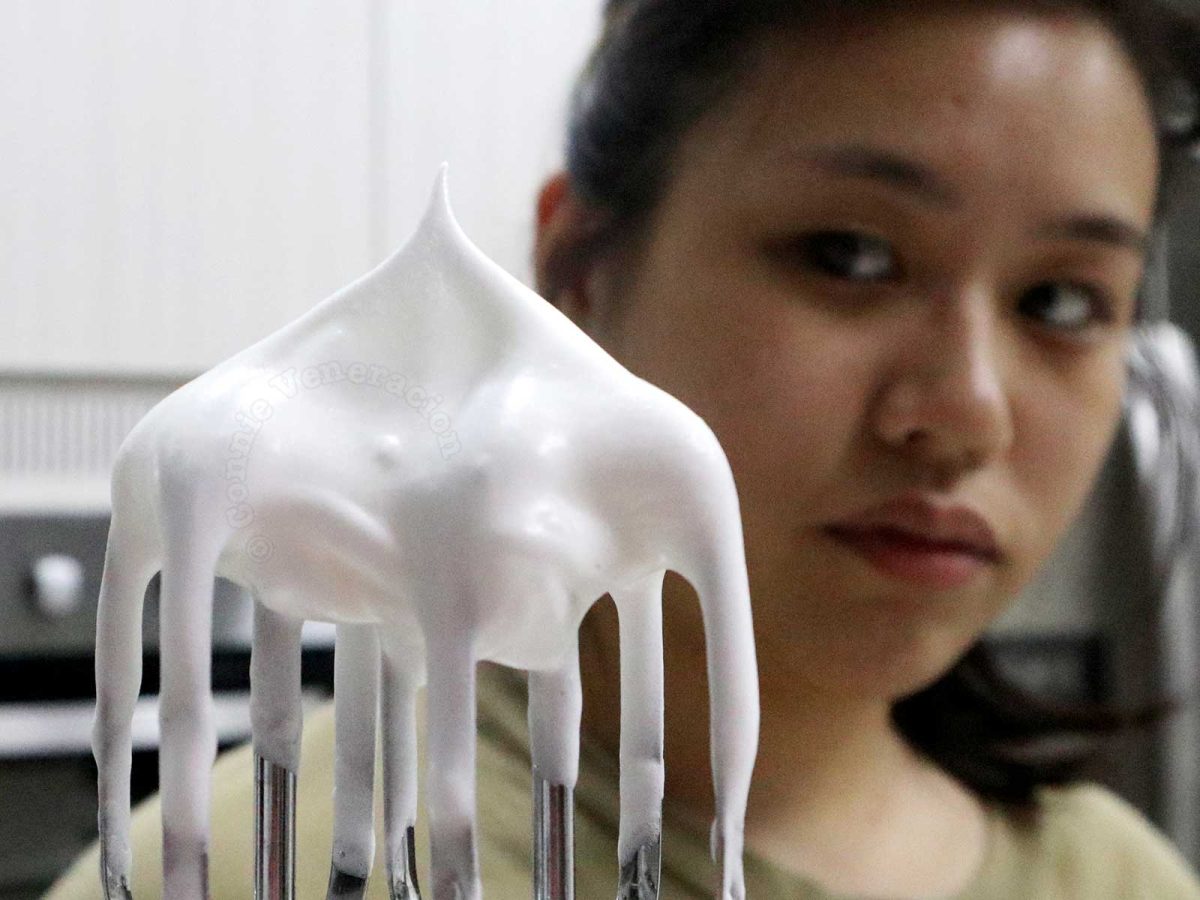
Continue beating the egg whites for half a minute or so. Lift the beaters and invert. If the tip of the peak stands up straight and does not bend, your egg whites have reached the stiff peak stage.
If the recipe calls for stiff but not dry peaks, inspect the surface of the egg whites in the bowl. The surface should still appear glossy.
If the recipe says stiff and dry peaks, continue beating until that glossiness has disappeared. That is the stiff and dry peak stage.

